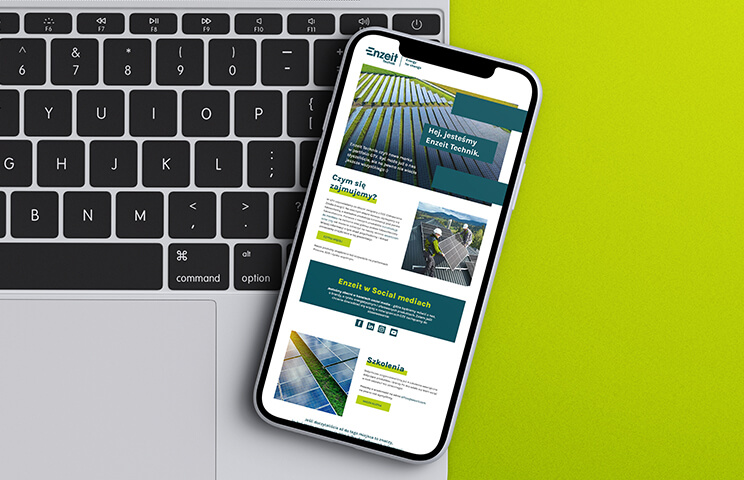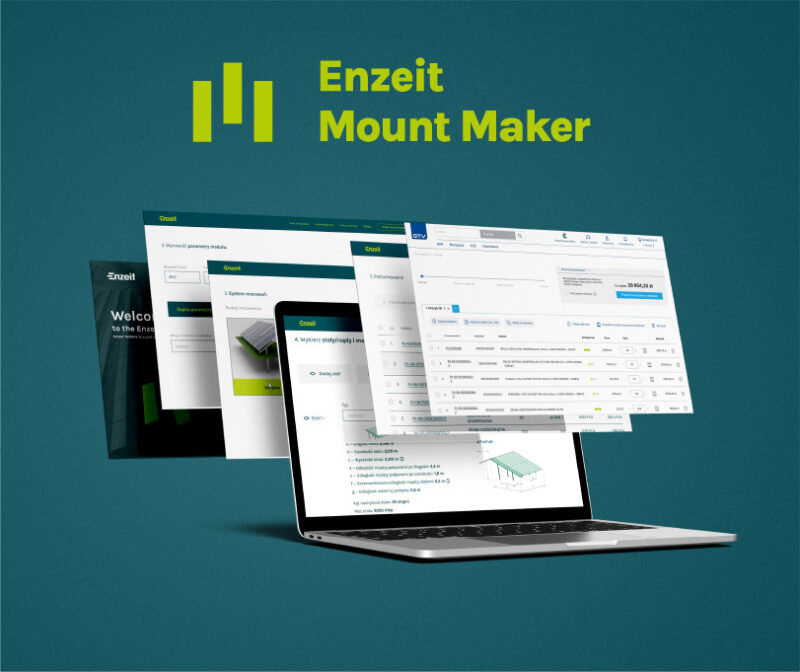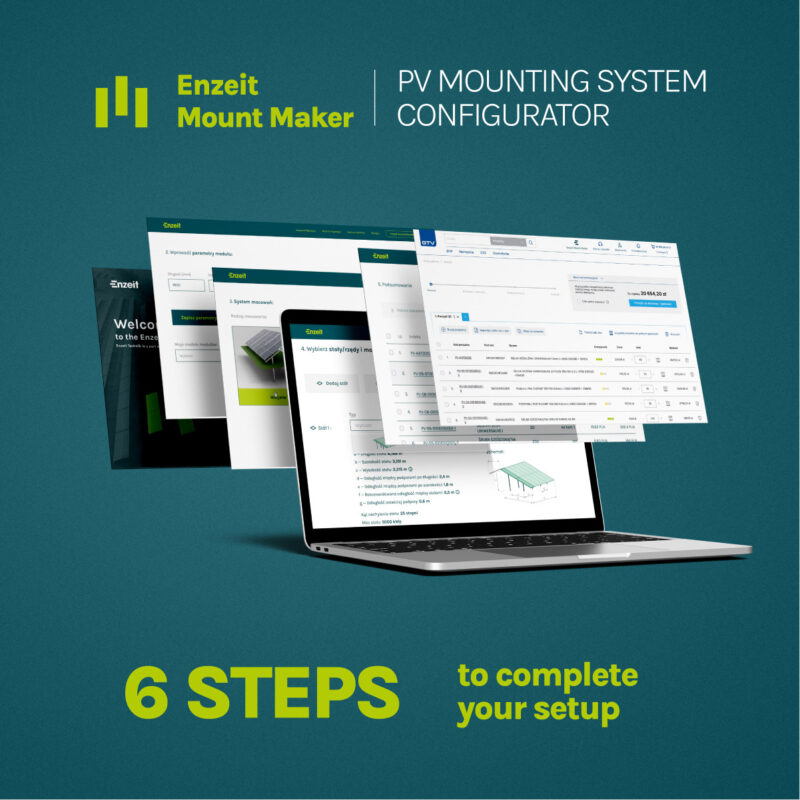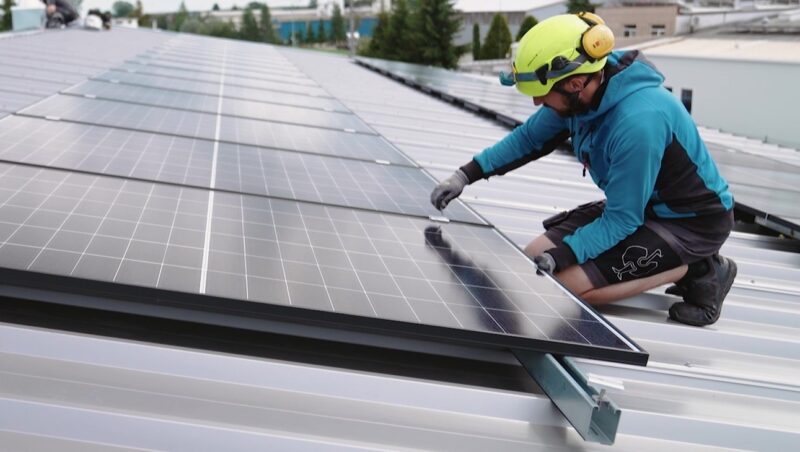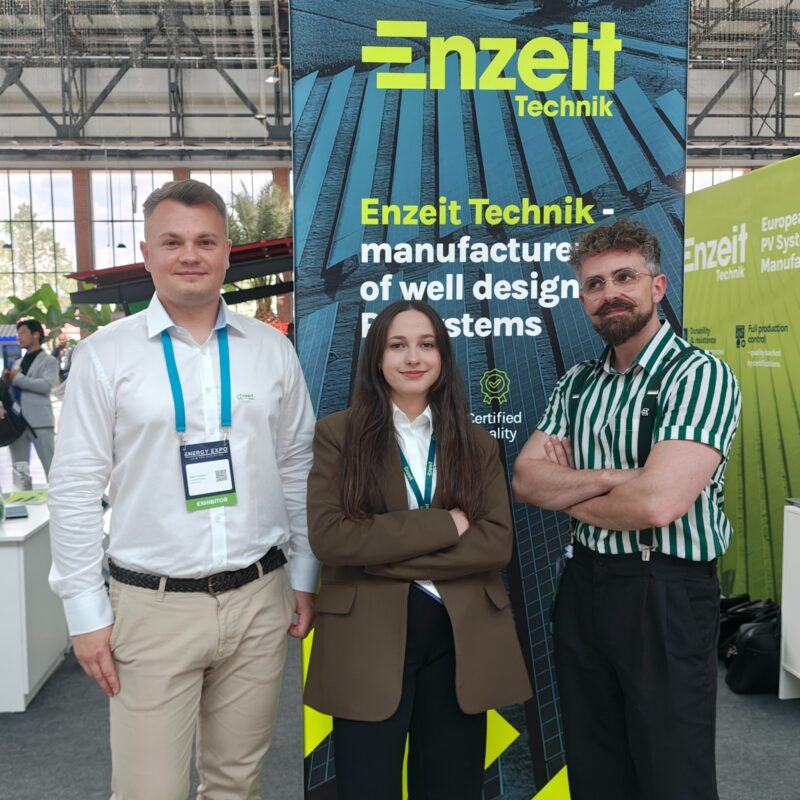Rooftop photovoltaic (PV) systems are a popular solution that offers numerous benefits. However, the process of installing solar panels on a roof can come with challenges that should be understood to avoid potential technical and financial problems. This article outlines the most common issues associated with rooftop PV installations, with a focus on different types of structures and roofing materials.
Photovoltaics on Sloped Roofs
Sloped roofs are one of the most common locations for PV panel installations, but their specific characteristics require appropriate mounting technologies. A key component is selecting specialized mounting brackets that minimize the risk of damaging the roof covering, such as ceramic tiles, metal roofing, or shingles. These brackets must be sturdy and properly adapted to the roof surface to ensure the durability of the PV installation without compromising the roof’s integrity.
Roof Type vs. Mounting System for Sloped Roofs
- Ceramic or concrete tiles: Requires precise installation of brackets between the tiles, with careful lifting, cutting, or grinding. Hook-type brackets that do not interfere with the tile structure are typically used.
- Metal roofing: Installation relies on special self-tapping screws with sealing washers, ensuring stability and water tightness.
- Bitumen shingles: Support systems should be lightweight to avoid damaging the flexible roof surface while being securely fastened to the load-bearing structure.
Adjusting the Tilt Angle of PV Panels on Sloped Roofs
The support structure on sloped roofs must be precisely aligned with the roof’s tilt angle. The optimal tilt angle for PV panels in Poland is 30° to 40°. For roofs with different angles, leveling structures can be used to improve the energy output of the system. An incorrect tilt can result in energy production losses of up to several percent.
Stability and Weather Resistance
On sloped roofs, the PV installation’s resistance to strong winds and snow loads plays a crucial role. Therefore, high-quality mounting systems made of materials such as stainless steel or aluminum are essential. Additionally, maintaining a sufficient distance between the PV panel and the roof surface allows for proper ventilation, preventing panel overheating and improving efficiency.
Despite some challenges, sloped roofs offer excellent conditions for PV installations due to their natural tilt, which supports efficient energy production. However, professional installation is key to ensuring the system’s stability, efficiency, and longevity.
Photovoltaics on Flat Roofs
Flat roofs are also a popular location for PV panel installations, particularly on industrial, office, and multi-family buildings. Their design requires special mounting technologies to ensure the correct tilt angle of the panels and minimize the risk of roof damage. The choice between ballast systems and systems attached to the roof structure is crucial for ensuring stability and durability.
Roof Type vs. Mounting System for Flat Roofs
- Bitumen membrane or roofing membrane: Both ballast structures and fixed systems can be used; however, fixed systems require careful sealing of the mounting points to prevent leaks.
- Trapezoidal sheet metal: Lightweight support systems fastened to the roof structure with screws are commonly used, ensuring durability and resistance to movement.
- Reinforced concrete: Concrete roofs allow for fixed mounting structures, providing additional stability, especially in areas exposed to strong winds.
Adjusting the Tilt Angle of PV Panels on Flat Roofs
The support structure on flat roofs must provide the appropriate tilt angle for the PV panels. Horizontal installation without proper tilting can result in reduced system efficiency, especially in winter when the sun’s rays hit at a lower angle.
For flat roofs, common structures include:
- Ballast systems: The weight of the ballast keeps the PV panels stable, and their positioning at the correct angle maximizes energy production.
- Fixed systems: Mechanically attached to the building structure using screws or anchors, this solution is recommended for roofs in windy areas, where additional anchoring increases the PV system’s safety.
Stability and Weather Resistance
On flat roofs, special attention must be paid to the system’s wind resistance. Flat surfaces are more exposed to wind gusts, making mechanically fastened structures an effective way to prevent the installation from shifting. Proper sealing of mounting holes is also essential to prevent leaks and protect the waterproofing layer.
Common Issues with PV Structure Installation – What to Look Out For
1. Improper Mounting of PV Panels on the Roof
PV panel installation requires precise adaptation of the mounting system to the building structure and the roof type—whether it is sloped or flat. Poor mounting can lead to various problems, such as roof damage, system instability, or, in extreme cases, roof overloading-related failures.
Key challenges:
- System instability: Caused by improperly selected mounting systems or incorrect placement of brackets, which can lead to panels shifting during strong winds.
- Roof damage: Resulting from poorly sealed mounting points, which can cause leaks or weaken the roof structure.
- Excessive roof load: An overly heavy structure or unevenly distributed ballast can compromise the roof’s load-bearing capacity and cause deformations.
Solution: Properly design and install the support structure to account for the roof’s specifications and load-bearing capacity. Ensure even weight distribution, and secure mounting points against weather conditions. Professional installers familiar with different roof types can help avoid these issues.
2. Issues with Roof Load and Stability
The weight of PV panels, along with the support structure, adds an additional load to the roof. For older buildings or complex roof structures, an inaccurate load assessment can result in damage.
Key challenges:
- Excessive roof load: Can lead to deformations, cracks, or permanent weakening of the roof’s supporting structure.
- Uneven weight distribution: Localized overloading can cause damage to the roof covering or its deformation.
- Failure to account for additional atmospheric loads: Snow and wind can significantly increase the roof load if not considered in the design.
Solution: Commission a load-bearing capacity assessment by a certified structural engineer before installation. The support structure should be lightweight but durable, made from high-quality materials, and distribute the weight evenly across the roof surface. Additionally, consider mounting systems that are designed for local weather conditions, such as reinforced brackets for wind resistance and snow loads.
3. Roof Damage During PV Installation
Improper PV panel installation can cause permanent damage to the roof covering, such as leaks or structural weakening. Leaks often result from poorly sealed mounting points or incorrect selection of the mounting system. Water leaks can damage insulation, corrode structural elements, and cause long-term building deterioration.
Key challenges:
- Poorly sealed mounting points: Incorrect or poorly chosen sealing materials can allow water to seep through, causing leaks and roof degradation.
- Errors during drilling: Drilling holes that are too large or imprecise can compromise the roof’s integrity and cause leaks.
- Improper system selection: A structure not adapted to the roof type can lead to uneven load distribution and roof damage.
Solution: Use high-quality mounting systems and dedicated sealing materials, such as EPDM gaskets or bitumen tapes that are weather-resistant. Ensure precise drilling of mounting holes and their proper sealing. Conduct post-installation inspections of mounting points and seals to detect potential issues.
4. Installation Errors Leading to Fire Hazards
PV installation on a roof requires adherence to strict safety standards, including fire protection guidelines. Loose electrical connections or overheating components can increase the risk of fire. It is also important to protect cables from damage caused by birds or weather conditions.
Key challenges:
- Loose electrical connections: Poorly connected wires can create electrical arcs, posing a fire hazard.
- Overheating components: Incorrectly selected components or lack of proper ventilation can cause the system to overheat, increasing the risk of ignition.
- Damaged cables: Exposure to UV radiation or moisture can damage cables, increasing the risk of short circuits.
- Lack of surge protection: Without surge protection, power surges—such as those caused by lightning—can severely damage the PV system and create a fire risk.
Solution:
- Ensure high-quality electrical connections performed by qualified electricians.
- Provide adequate ventilation for PV panels and inverters.
- Protect cables with UV-resistant and moisture-proof conduits, and consider installing bird-proof mesh.
- Install surge protection devices to shield the system from lightning and power surges.
- Conduct regular inspections to identify potential hazards and ensure system integrity.
Summary
Installing PV panels on both sloped and flat roofs requires the adaptation of technology to the roof type, tilt angle, and weather conditions. Key challenges include ensuring stability and resistance to loads, properly sealing mounting points, and minimizing the risk of roof damage and fire hazards. Careful design, the use of high-quality materials, and regular system inspections are essential for guaranteeing the system’s efficiency, durability, and safety.
